British Railways - Milk Trains and Pick-Up Goods Trains
18th October 2024
In: News, Members' Articles
Milk Trains and Pick-up Goods – Keith Walker
Today, most of our heritage railways are located on former branch lines and their original stations. This makes them eminently suitable to recreate two long lost elements of a railway system, the local milk train and the pick-up goods.
Milk trains were a common sight on our railways from the late 1930’s to the late 1960’s. A typical creamery would load a couple of milk tank wagons a day, with a single 3.000 imperial gallon three axle wagon carrying enough pasteurised milk to supply the daily needs of of about 35,000 people. Milk wagons were distributed around local creameries in the afternoon, and then collected first thing in the morning.
Up until 1959, when the practice was stopped, the train would often comprise a coach to carry any very early morning passengers. These locally collected tank wagons would eventual arrive at a mainline station to become part of a larger milk train hauled by an express locomotive to the cities.
Pick-up goods, were short goods (freight) trains that stopped at every station delivering whatever was required, often including coal for railway use. The trains would consist of a mix of box vans, open wagons, flat wagons etc. as required, and of course in those days. a ‘guards van’. The engine would often have to pick up other wagons from several stations and so would have to shunt the new wagons onto the train.
Over the years I am grateful to have had the opportunity to record photographically recreations on three of my favourite lines, the Severn Valley Railway, the South Devon Railway and the East Somerset Railway. A sample set of images is attached. All images were taken on digital Leica M cameras, from M9 through to M11-P.
A manual focus Leica M with prime (no zoom) lens would probably not be most people's first choice. However, all the photographs and books we love to look at about the days of original steam were of course made with manual film cameras.
A personal postscript I lived in Weymouth as a kid where my father was a Customs Officer (Waterguard) based on Weymouth quay. I can remember there being three outside cylinder pannier tanks (1367,8 and 9) that used to haul the tomato, boat and oil (for the boats) trains between the docks and the Station yard, over the famous tramway. All were fitted with a bell to warn pedestrians. One of these engines is thankfully preserved and still has a bell fitted, as can be seen in one of the images.
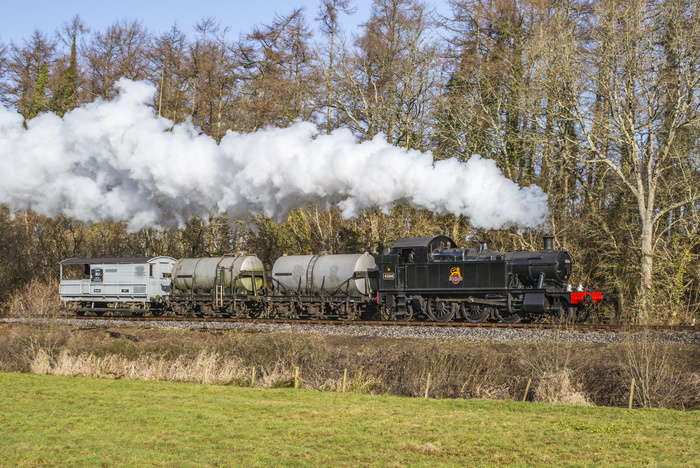
Milk Train 1 - © 2024 Keith Walker

Milk Train 2 - © 2024 Keith Walker
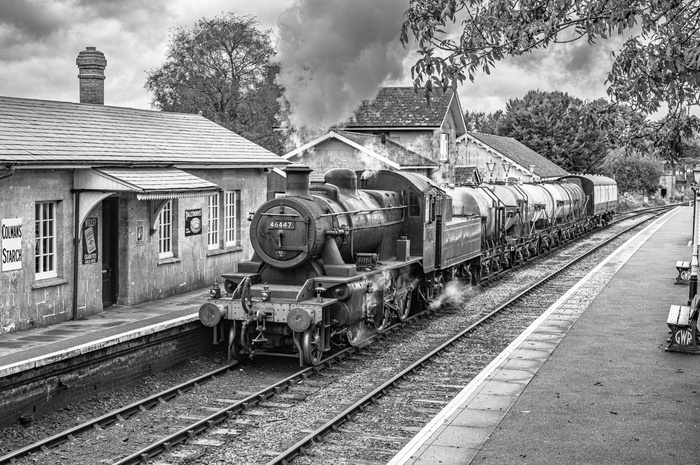
Milk Train 3 - © 2024 Keith Walker
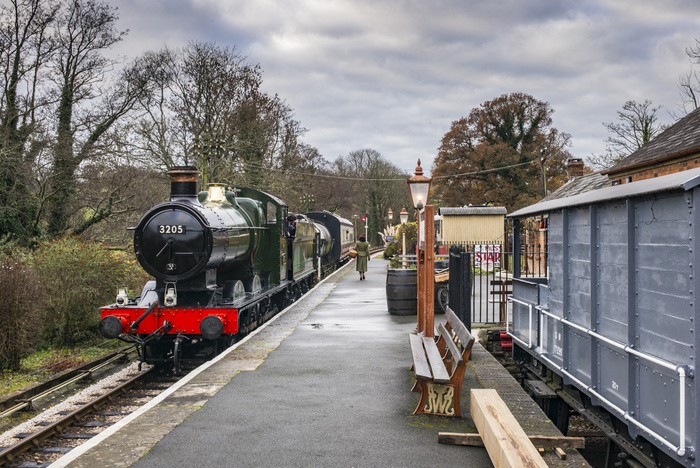
Milk Train 4 - © 2024 Keith Walker
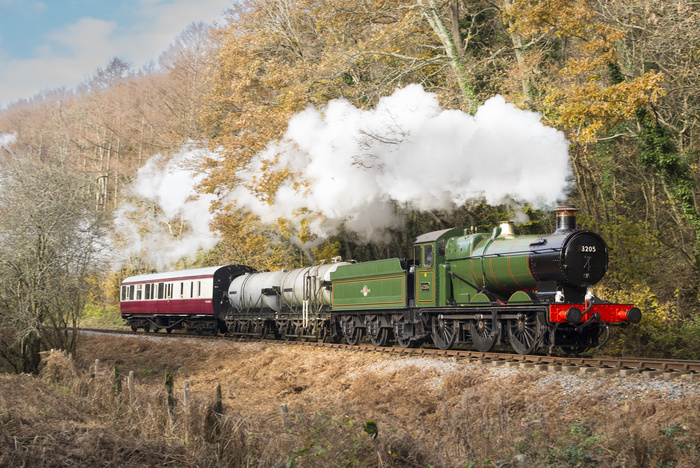
Milk Train 5 - © 2024 Keith Walker
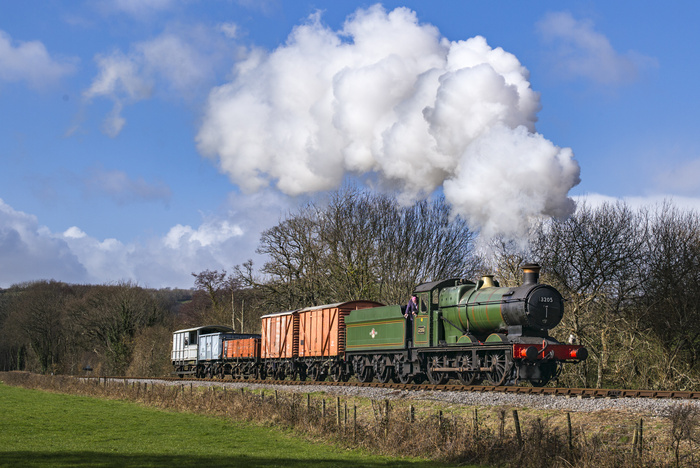
Pick-up goods Train 1 - © 2024 Keith Walker
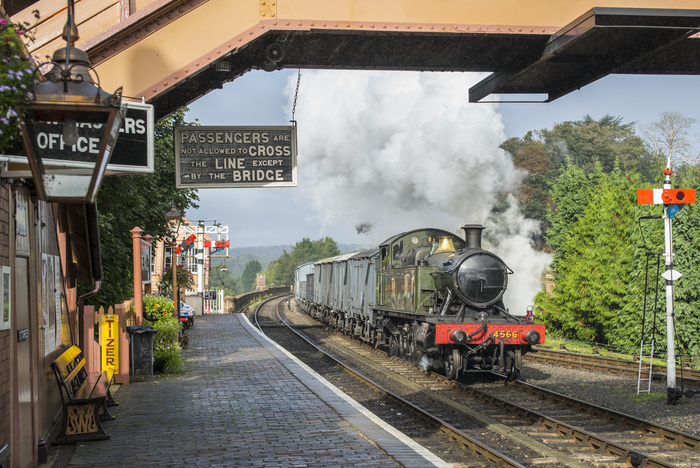
Pick-up goods Train 2 - © 2024 Keith Walker
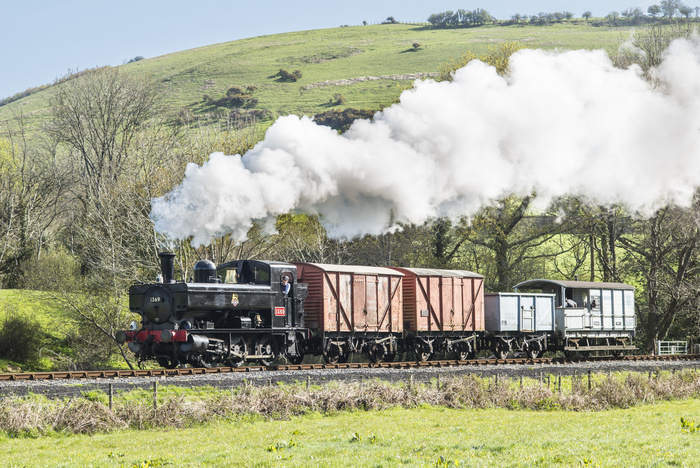
Pick-up goods Train 3 - © 2024 Keith Walker
Today, most of our heritage railways are located on former branch lines and their original stations. This makes them eminently suitable to recreate two long lost elements of a railway system, the local milk train and the pick-up goods.
Milk trains were a common sight on our railways from the late 1930’s to the late 1960’s. A typical creamery would load a couple of milk tank wagons a day, with a single 3.000 imperial gallon three axle wagon carrying enough pasteurised milk to supply the daily needs of of about 35,000 people. Milk wagons were distributed around local creameries in the afternoon, and then collected first thing in the morning.
Up until 1959, when the practice was stopped, the train would often comprise a coach to carry any very early morning passengers. These locally collected tank wagons would eventual arrive at a mainline station to become part of a larger milk train hauled by an express locomotive to the cities.
Pick-up goods, were short goods (freight) trains that stopped at every station delivering whatever was required, often including coal for railway use. The trains would consist of a mix of box vans, open wagons, flat wagons etc. as required, and of course in those days. a ‘guards van’. The engine would often have to pick up other wagons from several stations and so would have to shunt the new wagons onto the train.
Over the years I am grateful to have had the opportunity to record photographically recreations on three of my favourite lines, the Severn Valley Railway, the South Devon Railway and the East Somerset Railway. A sample set of images is attached. All images were taken on digital Leica M cameras, from M9 through to M11-P.
A manual focus Leica M with prime (no zoom) lens would probably not be most people's first choice. However, all the photographs and books we love to look at about the days of original steam were of course made with manual film cameras.
A personal postscript I lived in Weymouth as a kid where my father was a Customs Officer (Waterguard) based on Weymouth quay. I can remember there being three outside cylinder pannier tanks (1367,8 and 9) that used to haul the tomato, boat and oil (for the boats) trains between the docks and the Station yard, over the famous tramway. All were fitted with a bell to warn pedestrians. One of these engines is thankfully preserved and still has a bell fitted, as can be seen in one of the images.

Milk Train 1 - © 2024 Keith Walker

Milk Train 2 - © 2024 Keith Walker

Milk Train 3 - © 2024 Keith Walker

Milk Train 4 - © 2024 Keith Walker

Milk Train 5 - © 2024 Keith Walker

Pick-up goods Train 1 - © 2024 Keith Walker

Pick-up goods Train 2 - © 2024 Keith Walker

Pick-up goods Train 3 - © 2024 Keith Walker
Comments
 By Ken Davis: These photographs recreate how important feeds into the railway transport system could produce interesting trains. Many of my model railway friends create small layouts that depend on these sorts of trains for their operational interest. The black and white photograph evokes those times even more.
By Ken Davis: These photographs recreate how important feeds into the railway transport system could produce interesting trains. Many of my model railway friends create small layouts that depend on these sorts of trains for their operational interest. The black and white photograph evokes those times even more. By Pam Lewis: Lovely photos of the old steam engines
I remember the smell as we used to put our heads out of the windows. Nostalgia
By Pam Lewis: Lovely photos of the old steam engines
I remember the smell as we used to put our heads out of the windows. Nostalgia By David Askham: Pictures stimulate memories and Keith's focus on milk trains certainly has done in my case. I grew up with a busy branch line not far from the bottom of our garden. My brothers and I saw and heard all kinds of rail traffic ranging from commuter passenger trains to all manner of freight trains. My abiding memory was of the Thursday weekly cattle trains, taking livestock to market. The partly opensided trucks allowed an orchestra of animal utterings as they swept through the countryside.
Another railway memory resounds in my mind, that of the goods traffic marshalling yards, three miles away. The characteristic rattling of linking chains, together with the metallic impact of buffers, as goods trains were reassembled for their various destinations, will always remain with me. Thank you for the stimulus, Keith.
By David Askham: Pictures stimulate memories and Keith's focus on milk trains certainly has done in my case. I grew up with a busy branch line not far from the bottom of our garden. My brothers and I saw and heard all kinds of rail traffic ranging from commuter passenger trains to all manner of freight trains. My abiding memory was of the Thursday weekly cattle trains, taking livestock to market. The partly opensided trucks allowed an orchestra of animal utterings as they swept through the countryside.
Another railway memory resounds in my mind, that of the goods traffic marshalling yards, three miles away. The characteristic rattling of linking chains, together with the metallic impact of buffers, as goods trains were reassembled for their various destinations, will always remain with me. Thank you for the stimulus, Keith. By Alan Humphries: Thank you, Keith for bringing back so many memories.
The last train each day from Exeter Central to Waterloo took forever and was nicknamed the 'Milk Train'. I also have vivid memories of the daily mixed goods from Exeter Central to Exmouth through to the docks. Every station on route had a goods siding, which included bays in which local coal merchants kept their stock. The local mixed goods train was the link to the outside world for rural communities, nearly everything either arrived or left by train.
Keith, you make a good point about the photos in our favourite rail books being taken on fixed focal length, manual lenses and cameras. Your photographs really capture the atmosphere of a bygone age. In my mind I can smell the mixture of steam and oil in the air. Thank you.
By Alan Humphries: Thank you, Keith for bringing back so many memories.
The last train each day from Exeter Central to Waterloo took forever and was nicknamed the 'Milk Train'. I also have vivid memories of the daily mixed goods from Exeter Central to Exmouth through to the docks. Every station on route had a goods siding, which included bays in which local coal merchants kept their stock. The local mixed goods train was the link to the outside world for rural communities, nearly everything either arrived or left by train.
Keith, you make a good point about the photos in our favourite rail books being taken on fixed focal length, manual lenses and cameras. Your photographs really capture the atmosphere of a bygone age. In my mind I can smell the mixture of steam and oil in the air. Thank you.